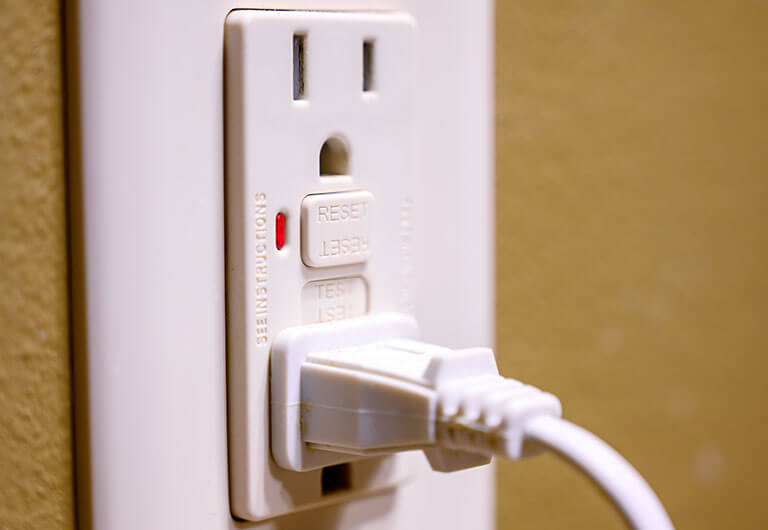What Do GFCI Outlets Do?
In the U.S., receptacles with “test” and “reset” buttons in the middle are a common sight,but what do these GFCI outlets actually do, and why do we need them? The short answer is, ground fault circuit interrupters (GFCIs) detect and protect us from electrical shock. GFCIs are sometime referred to as GFI.
How Do They Work?
GFCI receptacles monitor the flow of electricity flowing out of the outlet, through the connected equipment, and back into the outlet. If the amount coming in doesn’t equal the amount going out, the circuit trips, stopping the electricity’s flow. This can happen in as little as 1/30th of a second and be triggered by a difference as small as 4 milliamps.
When a person is shocked, some of the electricity flows through their body and out through any surfaces they are touching. That means not all of the electricity that goes out of an outlet comes back in. With a normal electrical receptacle, the electricity would just keep flowing, resulting in electrocution. A GFCI outlet, however, would detect that some of the electricity is flowing where it shouldn’t and then trip the circuit to stop the current before a serious shock can occur.
GFCI vs. AFCI Outlets
Both types of electrical receptacles are safety devices, but they each serve a different purpose. GFCIs protect people from electrical shock resulting from a ground fault, which is when electricity finds a path to the ground through an unintended path, such as a human body. Arc fault circuit interrupters protect homes and other structures from fires caused by wiring problems.

Where Should GFCI Outlets Be Installed?
The general rule of thumb is to install GFCI outlets in any electrical receptacle near water, including kitchens, bathrooms, and outdoors. Each city or community has its own code that determines where the GFCIs are required, so check with your local building authority if you’re unsure whether your outlets are up to code.
In Sedgwick County, Kansas, electrical code changes adopted in 2014 added requirements for GFCI outlets for 125-volt receptacles that are within 6 feet of a shower or bathtub, as well as in all laundry rooms, inside garages, on outlets where dishwashers, central vacuums, and single-phase pool pump motors are connected, as well as other areas.
Test Monthly
Like any electronic component, GFCI outlets can wear out over time, so it’s important to test them monthly to make sure they’re working correctly. Even if the outlet itself works, that doesn’t mean the circuit interrupter itself will work when you need it. Testing a GFCI receptacle is easy – just push the “test” button. If everything’s working correctly, the “reset” button will pop up. If it doesn’t, the outlet should be replaced.
Resources found on this site are provided as general information, and Reddi Industries does not assume any liability issues related to content provided here. We try to provide current/accurate information, but this article could contain info that is not correct for your situation. If you attempt to repair or modify equipment in your home or business, only do so if you are qualified.

